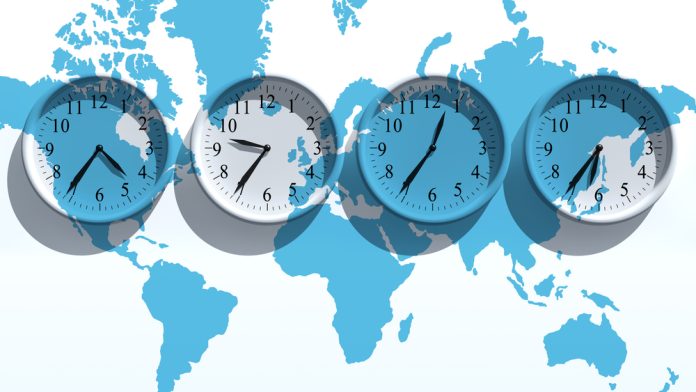
Current Time In Australia
Need to see the current time in all Australian capital cities such as Brisbane, Sydney, Melbourne, Hobart, Adelaide, Perth & Darwin?
All times listed below are current. If your travelling to a capital city in Australia, the entire state of that capital city is at the same time. For instance, if you are travelling to Sydney, the entire state of NSW has the same time.

Use this tool to find out the time in Australia right now.
You can find out what the current time is using our clocks above. There are many reasons to use this tool, for instance, if you are travelling from city to city and want to know what time it is in the capital cities of Australia.
All capital cities in Australia have a time zone, and if you travel to a state for the capital city listed here, it will have the same time as the time listed here. Finding the current Australian time with our “What’s the time” tool is the perfect solution.
What’s The Current Time In Australia?
You can use our handy clocks to find out the current time in Australia. We also list all Capital city times and state times for Brisbane, Sydney, Melbourne, Hobart, Adelaide, Perth & Darwin, Queensland, New South Wales, Victoria, Tasmania, South Australia, Western Australia & the Northern Territory.
What countries have the same timezone as Australia?
- UTC+11
- Australia: Australian Capital Territory, New South Wales (excluding Broken Hill), Tasmania, Victoria (Australian Eastern Daylight Time)
- Australia: Norfolk Island.
- Federated States of Micronesia: Kosrae, Pohnpei.
- New Caledonia.
- Russia: Kuril Islands, Magadan Oblast, Sakha.
- The Solomon Islands.
- Vanuatu.
How many time zones are in Australia?
Australia is divided into three time zones:
- Australian Eastern Standard Time (AEST) covers the eastern states of Queensland, New South Wales, Victoria, and Tasmania. AEST is 10 hours ahead of Coordinated Universal Time (UTC).
- Australian Central Standard Time (ACST) covers the central states of South Australia and the Northern Territory. ACST is 9.5 hours ahead of UTC.
- Australian Western Standard Time (AWST) covers the western state of Western Australia. AWST is 8 hours ahead of UTC.
It’s important to note that Daylight Saving Time (DST) is observed in some parts of Australia. During DST, the clocks are moved forward by one hour, so the time difference with UTC changes.
DST is observed in New South Wales, Victoria, South Australia, Tasmania, and the Australian Capital Territory from the first Sunday in October to the first Sunday in April. It is not observed in Queensland, the Northern Territory, or Western Australia.
Daylight Savings In Australia
Daylight Saving Time (DST) is observed in some parts of Australia during certain months of the year. DST is a way to extend the amount of daylight in the evenings by setting the clocks forward by one hour.
During DST, the clocks are moved forward by one hour at 2:00 AM local standard time on the first Sunday in October. They are then moved back by one hour at 3:00 AM local daylight time on the first Sunday in April.
DST is observed in the following states and territories of Australia:
- New South Wales (including the Australian Capital Territory)
Victoria
South Australia
Tasmania
DST is not observed in the following states and territories of Australia:
- Queensland
Western Australia
Northern Territory
It’s important to note that the dates and times that DST begins and ends can vary from year to year, so it’s always a good idea to check the current schedule.
Is Sydney and Melbourne’s time the same?
Sydney, New South Wales, and Melbourne, Victoria, currently have equal time zones. You can call someone during your regular hours. It will be the same time in Melbourne, Australia, as in Sydney, Australia.
Is Brisbane AEST or AEDT?
Brisbane, the capital of Queensland, is in Australian Eastern Standard Time (AEST) all year round. AEST is 10 hours ahead of Coordinated Universal Time (UTC).
Daylight Saving Time (DST) is not observed in Queensland, including Brisbane. As a result, the time in Brisbane remains AEST throughout the year, regardless of the season.
It’s always a good idea to double-check the current time in Brisbane, as the dates and times that DST begins and ends can vary from year to year in other parts of Australia. You can check the current time in Brisbane by using a reliable online source or by contacting a local source such as a news organization or the tourism board.
Is Melbourne AEST or AEDT now?
Melbourne, the capital of Victoria, is in Australian Eastern Standard Time (AEST) for most of the year. AEST is 10 hours ahead of Coordinated Universal Time (UTC).
However, when Daylight Saving Time (DST) is observed, Melbourne is in Australian Eastern Daylight Time (AEDT). AEDT is 11 hours ahead of UTC.
DST is observed in Victoria, including Melbourne, from the first Sunday in October to the first Sunday in April. During this period, the clocks are moved forward by one hour from AEST to AEDT.
It’s always a good idea to check the current time zone for Melbourne, as the dates and times that DST begins and ends can vary from year to year. You can check the current time in Melbourne by using a reliable online source or by contacting a local source such as a news organization or the tourism board.
Is Sydney in AEST or AEDT?
Sydney, the capital of New South Wales, is in Australian Eastern Standard Time (AEST) for most of the year. AEST is 10 hours ahead of Coordinated Universal Time (UTC).
However, when Daylight Saving Time (DST) is observed, Sydney is in Australian Eastern Daylight Time (AEDT). AEDT is 11 hours ahead of UTC.
DST is observed in New South Wales, including Sydney, from the first Sunday in October to the first Sunday in April. During this period, the clocks are moved forward by one hour from AEST to AEDT.
So, to summarize, Sydney is in AEST for most of the year and in AEDT during the period when DST is observed. It’s always a good idea to check the current time zone for Sydney, as the dates and times that DST begins and ends can vary from year to year.
Why is Australia divided into 3 time zones?
Australia is divided into three time zones because of its large size and geographical location. Australia is the sixth-largest country in the world and spans a significant distance from east to west. As a result, there are significant differences in the local solar time across the country.
The main reason for the three time zones in Australia is to ensure that each region has an appropriate local solar time. For example, the time in the eastern states of Queensland, New South Wales, Victoria, and Tasmania is set 10 hours ahead of Coordinated Universal Time (UTC) to ensure that the sun rises and sets at a reasonable hour in these regions.
Similarly, the time in the central states of South Australia and the Northern Territory is 9.5 hours ahead of UTC, and the time in the western state of Western Australia is 8 hours ahead of UTC.
Additionally, the use of multiple time zones helps to reduce the impact of long-distance travel and communication on business and social activities within the country. It allows people in different parts of the country to work and communicate with each other during regular business hours, even though they may be in different time zones.
Read more about daylight savings time in Australia


























































